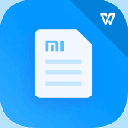








Best Arduino Projects

Best Arduino Projects介绍
Arduino is an open-source prototyping platform based on easy-to-use hardware and software. Arduino boards are able to read inputs - light on a sensor, a finger on a button, or a Twitter message - and turn it into an output - activating a motor, turning on an LED, publishing something online. You can tell your board what to do by sending a set of instructions to the microcontroller on the board. To do so you use the Arduino programming language (based on Wiring), and the Arduino Software (IDE), based on Processing.
That actually says it all.
You can find the complete introduction here.
Maybe a little more information about the board:
The Arduino Board itself is a blue circuit board, the size of a credit card (but they also have models in other sizes). It has two rows of connectors (the 'headers'), a power connector and a USB connector. The brain of the board is an Atmel microcontroller. It's like a really small, very low power 'computer'. (It only has 32KB of storage, 2KB of RAM, and the 8-bit processor runs at only 16MHz.) For most applications, however, this is more than enough. The pins of the processor connect to the headers, and you can connect them to virtually anything you can imagine. You just need to write some lines of code to control them. The I/O pins (Input/Output) can be used as input pins, to connect buttons or knobs, temperature sensors, light sensors, or even keyboards and mouses, digital musical instruments … or they can be used as output pins, to connect LEDs, drive motors, control the lights in your home, connect to small displays or even connect to the Internet, so that it can check your mail, post tweets ... Through the USB connection you can also use it to control your computer, or use your computer to control the Arduino.
As you can see, the sky's pretty much the limit !
Arduino is a popular open-source development board for engineers and makers to develop electronics projects in an easy way. It consists of both a physical programmable development board (based on AVR series of microcontrollers) and a piece of software or IDE which runs on your computer and used to write and upload the code to the microcontroller board.
Explore below some interesting arduino projects and tutorials based on different types of arduino baords like Arduino Uno, Arduino Pro Mini, etc. These DIY arduino projects for beginners are explained well and you can find the complete guide to DIY these projects with the help of circuit diagrams, source codes and videos. You can also browse below pages to get new arduino project ideas.
Arduino是基于易于使用的硬件和软件的开源原型平台。 Arduino的板是能够读取输入 - 上的传感器,按钮上手指或Twitter信息光 - 并把它变成一个输出 - 致动的电动机,开启的LED,出版的东西线上。你可以告诉你的是什么板子通过发送一组指令到电路板上的微控制器做。为此,您使用的Arduino编程语言(基于布线)和Arduino的软件(IDE)的基础上处理。
这实际上说明了一切。
你可以在这里找到完整的介绍。
关于董事会可能还会多一点信息:
在Arduino板本身就是一个蓝色的电路板,一张信用卡的大小(但他们也有其他尺寸机型)。它有连接器的两排(在“报头”),电源连接器和USB连接器。董事会的大脑是一个爱特梅尔微控制器。这就像一个真正的小,非常低功耗的“计算机”。 (它只有存储,2KB的RAM的32KB,并且8位处理器仅在16MHz的运行)。对于大多数应用,然而,这是绰绰有余。处理器的引脚连接头,并且可以将它们连接到几乎任何你能想象。你只需要编写一些代码来控制它们。的I / O引脚(输入/输出)可被用作输入管脚,来连接按钮或旋钮,温度传感器,光传感器,或甚至键盘和鼠标,数字乐器...或者它们可以用作输出引脚,以连接发光二极管,驱动电机,控制路灯在您的家中,连接到小型显示器,甚至连接到互联网,以便它可以检查你的邮件,张贴鸣叫......通过你也可以用它来控制你的计算机上的USB连接,或使用您的计算机来控制的Arduino。
正如你所看到的,天空中的相当多的限制!
Arduino是为工程师和制造商开发一个简单的方法电子项目一个流行的开放源代码开发板。它由两部分组成物理可编程开发板(基于AVR系列单片机)和一个软件或IDE它运行在您的计算机上,并用于编写和代码上传到微控制器板。
下方探索基于不同类型的Arduino baords像Arduino的乌诺,Arduino的临迷你等一些有趣的Arduino项目和教程这些DIY Arduino的项目,适合初学者解释好,你可以找到完整的指南,DIY这些项目与电路的帮助图中,源代码和视频。您还可以浏览网页下方,以获得新的Arduino项目的想法。
Arduino is an open-source prototyping platform based on easy-to-use hardware and software. Arduino boards are able to read inputs - light on a sensor, a finger on a button, or a Twitter message - and turn it into an output - activating a motor, turning on an LED, publishing something online. You can tell your board what to do by sending a set of instructions to the microcontroller on the board. To do so you use the Arduino programming language (based on Wiring), and the Arduino Software (IDE), based on Processing.
That actually says it all.
You can find the complete introduction here.
Maybe a little more information about the board:
The Arduino Board itself is a blue circuit board, the size of a credit card (but they also have models in other sizes). It has two rows of connectors (the 'headers'), a power connector and a USB connector. The brain of the board is an Atmel microcontroller. It's like a really small, very low power 'computer'. (It only has 32KB of storage, 2KB of RAM, and the 8-bit processor runs at only 16MHz.) For most applications, however, this is more than enough. The pins of the processor connect to the headers, and you can connect them to virtually anything you can imagine. You just need to write some lines of code to control them. The I/O pins (Input/Output) can be used as input pins, to connect buttons or knobs, temperature sensors, light sensors, or even keyboards and mouses, digital musical instruments … or they can be used as output pins, to connect LEDs, drive motors, control the lights in your home, connect to small displays or even connect to the Internet, so that it can check your mail, post tweets ... Through the USB connection you can also use it to control your computer, or use your computer to control the Arduino.
As you can see, the sky's pretty much the limit !
Arduino is a popular open-source development board for engineers and makers to develop electronics projects in an easy way. It consists of both a physical programmable development board (based on AVR series of microcontrollers) and a piece of software or IDE which runs on your computer and used to write and upload the code to the microcontroller board.
Explore below some interesting arduino projects and tutorials based on different types of arduino baords like Arduino Uno, Arduino Pro Mini, etc. These DIY arduino projects for beginners are explained well and you can find the complete guide to DIY these projects with the help of circuit diagrams, source codes and videos. You can also browse below pages to get new arduino project ideas.


























